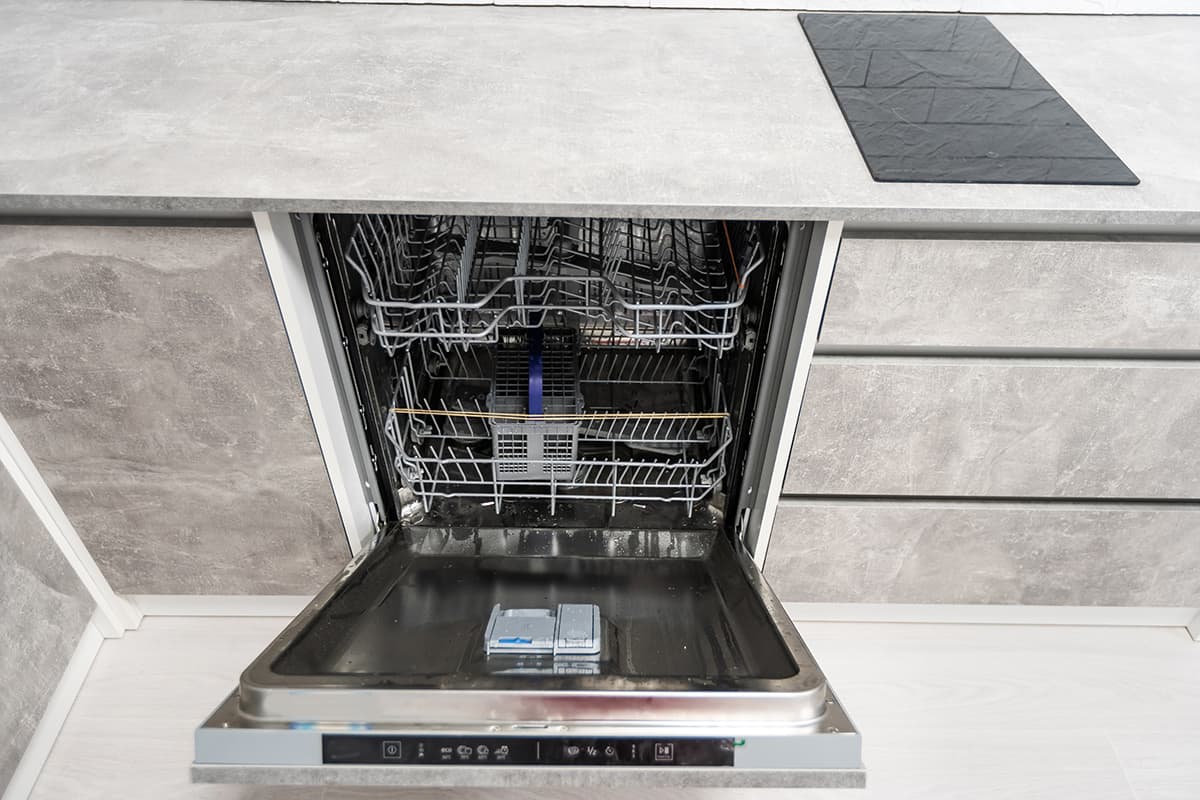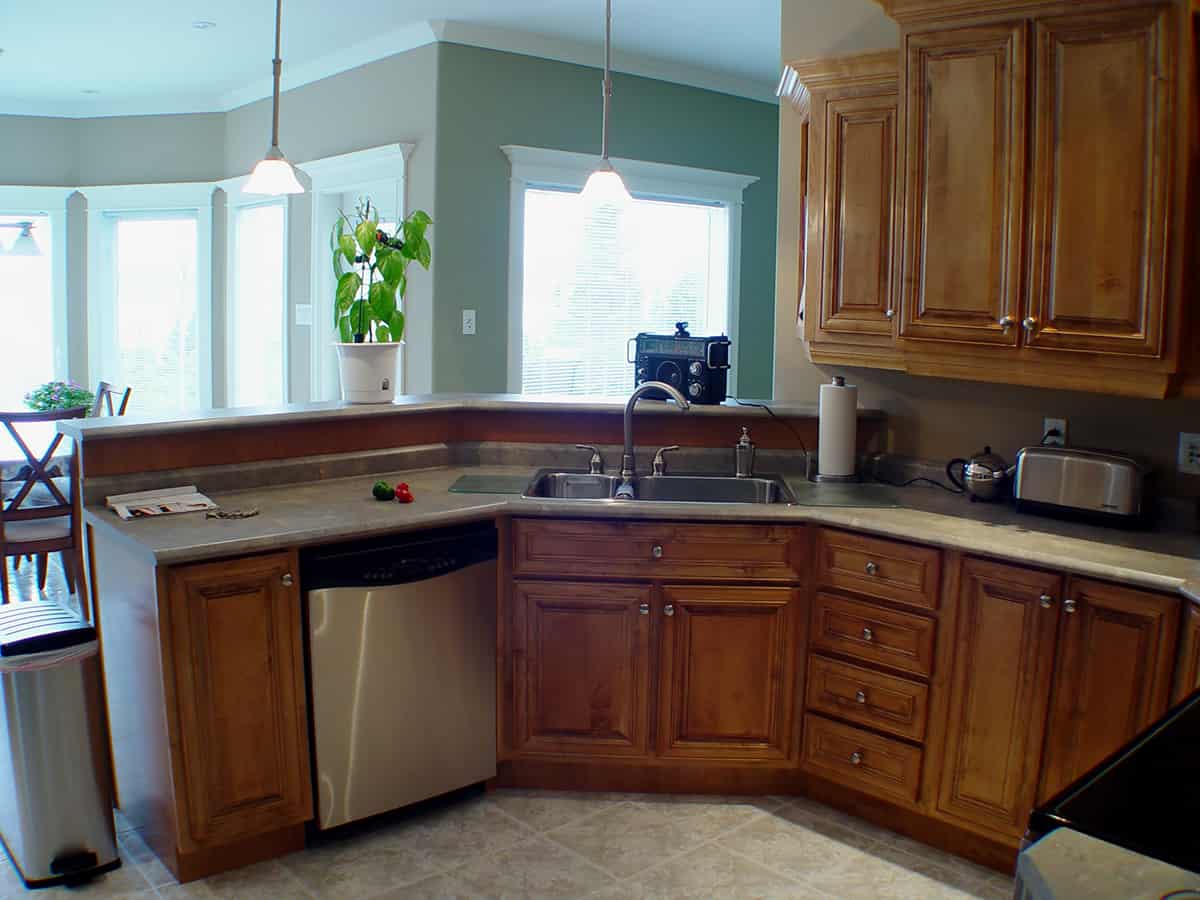If you landed on this page, you probably purchased a dishwasher recently. After setting it up, you probably found that there’s an unsightly gap between the top of the dishwasher and the underside of your counter. Is that supposed to be there, or did you get the wrong dishwasher size?
The empty space between your dishwasher and countertop is necessary to let the steam vent away from the machine. If you choose to do so, you can close the gap by raising your dishwasher by twisting the adjustable legs.
In this guide, I’ll explain in more detail how why there’s a gap between the dishwasher and countertop, as well as how to hide the gap as best as possible.
What Is the Gap Between Dishwasher and Countertop?
You just took home a dishwasher. After reading the owner’s manual, you learn that you have to leave around 2 inches of space between the top of your dishwasher and the bottom of your countertop. After installing it per the manual, you take a step back and see just how wide and unsightly that air gap actually is.
So, what’s up with the gap?
The gap is there as a way to release built-up steam surrounding the dishwasher. When your dishwasher fills with and drains hot water, the steam exits the vent ports located on the side or underneath the machine. However, if there’s no air gap around the dishwasher, the steam will soak into the adjacent cabinet walls or find a hiding spot behind the dishwasher.
When this happens, there’s a good chance that your kitchen will become infested with mold or that the dishwasher will develop rust in hard-to-reach spots. You can combat this by leaving an air gap between the top of your dishwasher and the bottom of your countertop.
Problems with the Gap Between Dishwasher and Countertop

Although the gap is there to allow steam to vent away from the dishwasher, it does serve one huge problem—it invites dust to settle on and around the dishwasher. And one of the last things people ever think of doing when cleaning their kitchen is dusting the dishwasher. It sounds ridiculous even saying it!
Can dust affect a dishwasher in any way? Yes, it can.
If dust clogs up the vent ports, steam won’t leave the dishwasher, and it can take several more hours for your dishes to dry in the dishracks. However, if you use your dishwasher frequently, dust won’t have a chance to create a thick enough layer to prevent heated air and steam from escaping.
Also, since the gap is the only way for steam to exit, the underside of your countertop may suffer from burns or moisture damage. This is why it’s generally advised that you leave a 2-inch gap so there’s enough space for the steam to vent.
How to Hide the Gap Between Dishwasher and Countertop
So, we’ve already established the importance of the air gap, but is it okay to close the gap completely?
Yes, it is, assuming you’ve already found another way to vent steam away from your dishwasher. Alternatively, you can reduce the gap between the dishwasher and the countertop so that there’s not a gaping hole between them.
There are three methods of closing the gap—lifting the dishwasher, creating a frame for the dishwasher, and using dishwasher filler strips.
Lifting the dishwasher
Dishwashers do not sit flush on the ground. Instead, they sit atop a set of legs that prop it a few inches off the ground. You can increase the vertical clearance between the underside of the dishwasher and the floor, thereby closing the topside gap, by adjusting the legs’ height.
To close the gap, you will need to play around with the adjustable legs on your dishwasher. Twist the legs until they prop the dishwasher higher and higher. Keep doing this until the gap is just about half an inch wide. Shutting the gap completely would be unwise due to the steam problem discussed above.
If the legs are not tall enough to close the gap as much as you’d like, you can further prop the machine up using spare bits of wood. Measure the remaining distance between the countertop and the dishwasher and cut a few strips of wood to that measurement. Place the dishwasher on top of the shims, and see how much better your kitchen looks without the annoying gap.
Creating a frame for the dishwasher

The frame is used to close any gaps on the top and sides of the dishwasher. You can construct a gap using spare strips of wood, as long as you can anchor it to the underside of your countertop.
Find a strip of wood that’s as wide as the dishwasher and mount it to the bottom of the countertop, leaving at least a half-inch opening.
Make sure to get the frame a touch of paint so that it blends in with its surroundings. The purpose of closing the gap is to make your kitchen look as nice as possible, and you might not achieve that if you have an old plank of wood mounted above your dishwasher.
The problem with wood is that it can become saturated with condensed water molecules, putting it at risk of moisture damage and mold growth. So, you’ll have to clean the wooden strip regularly or replace it when necessary (at least once roughly every 3 months).
Using dishwasher filler strips
Instead of using wood, which is prone to water damage, you can pick up a set of dishwasher filler strips, such as the Gosmol Silicone Counter Gap Cover. These strips install easily on the overhang of countertops to close the gap between the counter and your dishwasher. They’re easily removable, so you can wipe them down whenever you need to.
Make sure the strips are as long as your dishwasher is wide to close the gap as much as possible. If the strips are too long, feel free to cut them down to size.
Again, make sure the strips fit with the décor of your kitchen. Choose a color that matches your countertop as best as possible. You should not paint the strips since the chemicals in the paint can damage the strip’s silicone finish.
Do You Have to Leave a Gap on the Sides of a Dishwasher?
We’ve already talked about the gap between the dishwasher and the countertop, but should you leave a gap between the dishwasher and the adjacent cabinet walls? No, you shouldn’t.
When installing an integrated dishwasher, it will usually come with brackets or a mounting system that anchors the machine to the side walls. While the brackets may leave a gap, it’s only a fraction of an inch wide, which keeps more steam in than it allows to escape.
The dishwasher should be as flush with the adjacent walls as possible to keep it from moving around and producing rattling noises. There will also be a tiny gap between the bottom of the dishwasher and your flooring, but since steam rises, the underside gap will do very little to allow steam to leave the dishwasher cabinet.
Should You Close the Gap Between Dishwasher and Countertop?
Again, no, you shouldn’t. Steam needs to vent somewhere, and if it has nowhere to go, you might see the beginnings of rust development growing on the backside of the dishwasher.
Also, if your countertop is made of wood, then you need to remove as much steam from the dishwasher as quickly as possible. One way of doing this, apart from widening the gap, is by opening the dishwasher door immediately after the wash cycle is done.






